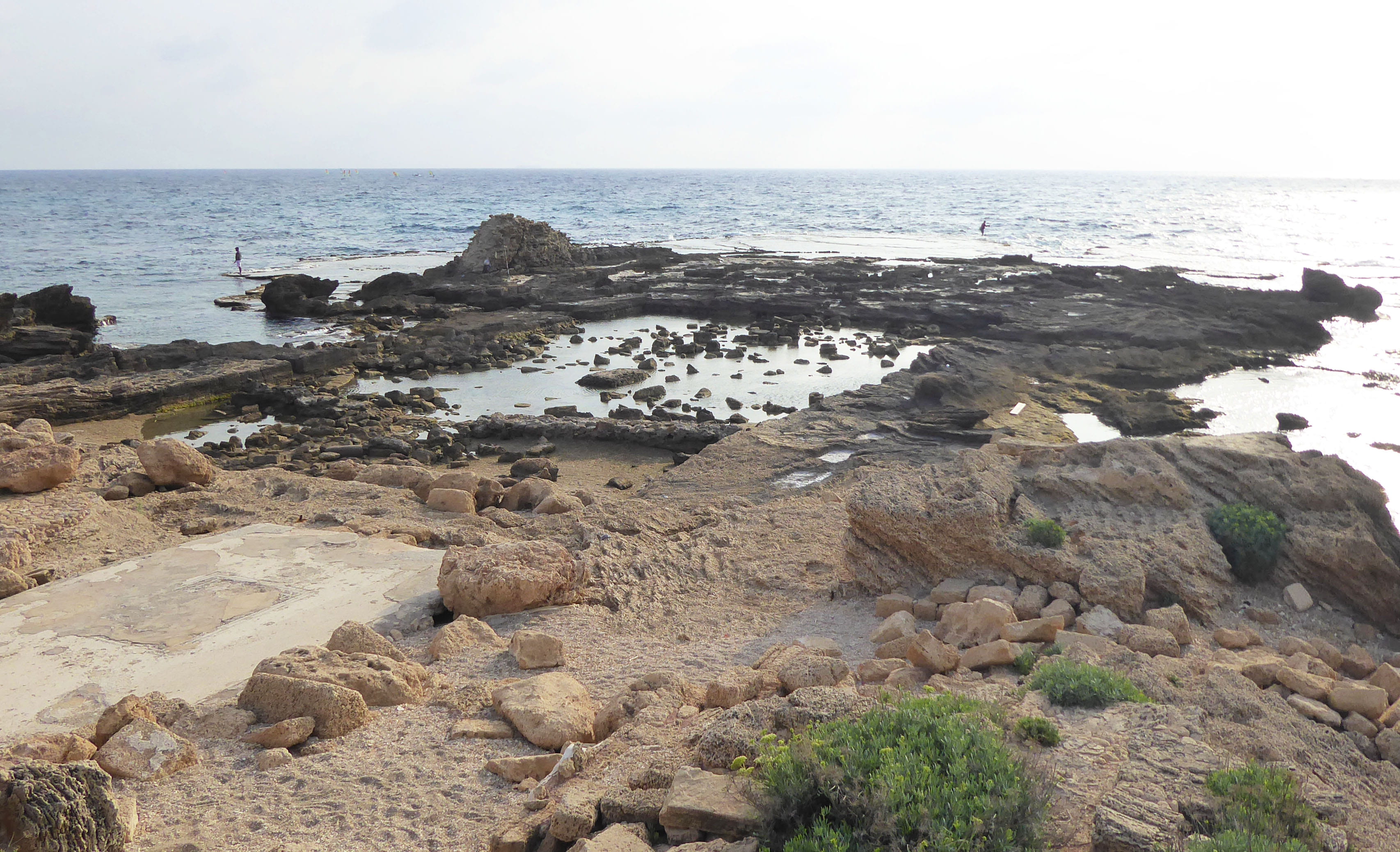
A new program at NYU Tel Aviv will allow students the rare opportunity to explore a focal point of regional and local archaeological attention. Founded by King Herod in the first century BCE on the site of a Phoenician and Greek trade post, the site, Caesarea Maritima, is positioned between Tel Aviv and Haifa (about 35 miles north of Tel Aviv). Situated in what was designated a national park in 2011, the site is comprised of ancient harbor ruins, and the complex has revealed a vast array of material culture manifestations, including architectural elements, ceramics, inscriptions, jewelry, and bones.
The program, which enrolled its inaugural cohort this fall, was developed through a collaboration between NYU, NYU Tel Aviv, the Israel Antiquities Authority, and Tel Aviv University, with funding provided by the Edmond de Rothschild Foundation, for the purpose of supporting the study of Caesarea from a broad international scholarly perspective. “The NYUTA Program in Archeology trains students in various theoretical, methodological and practical aspects of the archaeological discipline, using Caesarea as a case study,” said Benjamin Hary, site director of NYU Tel Aviv and professor at the Skirball Department of Hebrew and Judaic Studies. “As part of their studies, students in the program take two courses in Archeology: Ancient Israel: History and Archeology and a Seminar in Archeological Methods.”
Caesarea allows students to study the “geographical, economic and socio-political facets in antiquity, far beyond the scope of the mere material culture manifestations..." Benjamin Hary
The program’s students come from all three of NYU’s degree-granting “portal” campuses, and represent a range of disciplines, said Hary. “One student, from New York, is an anthropology major, but then we have a psychology major from Abu Dhabi, who is especially interested in the Hebrew Bible and in early Christianity.”
Students are able to gain a deep understanding of urban life at Caesarea through examination of physical artifacts and the rich corpus of available research “illuminating numerous aspects of the site and its inhabitants” said Hary. Ultimately, Hary said, Caesarea allows students to study the “geographical, economic and socio-political facets in antiquity, far beyond the scope of the mere material culture manifestations – the site is a laboratory for exercising several archaeological methods.”
Multi-modal in nature, the program,“combines frontal lectures with tours of major sites of the Roman period, including Jerusalem and Beit Shean in Israel and Jarash in Jordan,” explained Dr. Yifat Thareani, the Academic Principal Investigator of the Foundation’s grant and Lecturer with NYU Tel Aviv. “In the framework of this seminar,” she said, “the students gain insight from local and international experts in aspects of the Roman Period, such as imperial control strategies, urban layout, trade, local elites and minorities, ethnic identity, cultural ecology from NYU, the Israel Antiquities Authority, and Tel Aviv University. Meetings with local specialists in ancient pottery, archaeozoology, inscriptions and more, enable an understanding of just how specific pieces of material culture and archaeological remains are processed, reconstructed, and analyzed.”
Students will present their findings from their semester exploring Caesarea at two international conferences. Thareani said “one will be held in Caesarea in 2020 and be open to the Israeli public and international academics from Europe and the United States, as well as locally renowned academics. The other will be held in New York in 2021, most likely in the form of workshops and public lectures.”